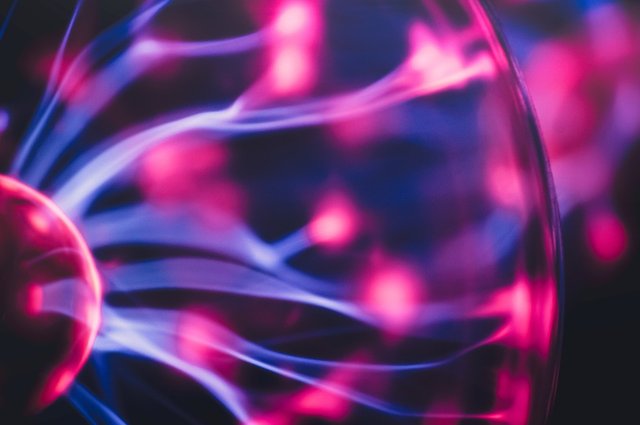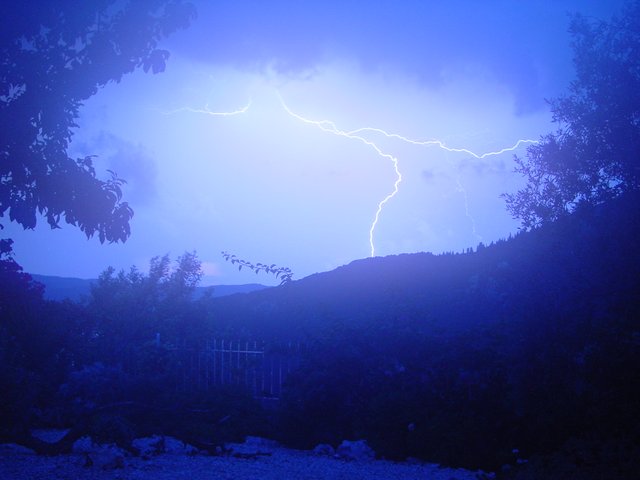Solids, Liquids and Gases… Is that it? – Part 1
If you remember back to the days where you just started learning Science, you’ll most likely have been taught that matter can be one of 3 possible states; a solid, a liquid or a gas. Is that completely true? Could we heat a gas up so much that if we looked at it, we fundamentally cannot call it a gas anymore? Similarly, could we cool down a solid so much that we cannot call it a solid?
States of Matter
We know that giving enough heat to a solid gives you a liquid, and doing so again to a liquid gives you a gas; but could you give enough heat to a gas to change it enough so that it becomes another state of matter? Yes, is the answer; you get Plasma.
The Fourth State of Matter: Plasma
To understand what plasma is, we must understand the general structure of the atom. The atom is composed of a nucleus, which is made up of protons and neutrons, with electrons orbiting this nucleus.
What is Plasma?
Plasma is when a gas is given so much energy; by heating it to very high temperatures, or exposing it to high voltages/ currents - such that some electrons are stripped from orbit around the nuclei in this given gas [1]. Essentially, you have a mixture of ionized atoms and free electrons floating about around each other. Plasma evenly distributes itself around the container it is enclosed in, as do gases; so, what makes them different?
What makes Plasma different to a gas?
Although plasma is like a gas in the way it is distributed in its container; it is significantly different thus allowing it to be its own state of matter. Normal, or neutral gases are usually poor conductors of electricity. In fact, they are used for their insulative properties at times.
Plasma on the other hand, conducts electricity very well due to so much free charge floating about within it [2]. Also, since it conducts electricity very well, it means that it is incredibly responsive to magnetic fields (the two come hand in hand: electromagnetism = electricity + magnets).
Where can we see this plasma?
Believe it or not, plasma makes up 99% of the visible Universe. What we call solid, liquid or gas is nothing in comparison to what is actually there – so where is it?
Stars
Due to the sun’s incredibly high temperatures; it itself is a big ball of plasma [3]. Atoms in and around the Sun are exposed to so much energy, that electrons cannot stay in orbit around the nucleus. This therefore makes every other Star in the Universe a big ball of plasma, also.
Fluorescent Lights
When you turn on a light, a large current is passed into the gas that is enclosed in the bulb. This current strips electrons away from the atoms in the gas to produce a plasma. This plasma interacts with the coating of the bulb (which is usually made of Phosphor) in turn producing light [4].
Lightning
When you see a lightning strike; what you are really seeing is a thin line of plasma, shooting through the air. Lightning heats up the air around it to 5 times the temperature of the surface of the Sun so as you can imagine, the electrons are instantly stripped away from the atoms in the air around it – leaving a trail of plasma [5].
In conclusion, plasma is when electrons are freed from their atoms due to receiving sufficient energy. Other examples of plasma are as follows:
• Fire
• Plasma balls
• Aurorae (The Northern Lights)
• Plasma TVs
If any of these examples interest you, I suggest you research into how and why they involve plasma. This article would be too long if I explained how each one worked!
Part 2 will feature the fifth state of matter; the Bose-Einstein Condensate. It’s an interesting one so stay tuned!
If you have any questions, leave them below and until next time, take care.
~ Mystifact
References:
[1] – http://pluto.space.swri.edu/image/glossary/plasma.html
[2] – https://www.youtube.com/watch?v=xuUJwFLUpS0
[3] – https://www.plasma-universe.com/Sun_and_stars
[4] – https://www-spof.gsfc.nasa.gov/Education/wfluor.html
[5] – https://en.wikipedia.org/wiki/Plasma_
Please note; no copyright infringement is intended. All images used have been labelled for re-use on Google Images. If any artist or designer has any issues with any of the content used in this article, please don’t hesitate to contact me to correct the issue.
Relevant articles:
What happens if you are STRUCK by Lightning?
Why Can We See Through Glass?
Wonders of Quantum Physics: “What is Matter?”
Previous articles:
Can stress eventually KILL you?
Introducing the all new MystiFACT-or-FICTION Challenge!
Why Do We Get Nervous?
Follow me on: Facebook, Twitter and Instagram, and be sure to subscribe to my website!



Great post, there is also a thing called a supercooled liquid, and an amorphous solid. You can consider those also as different states for a material. I wrote about glass, an amorphous solid in a previous article. Check it out if you like!:
https://steemit.com/science/@awesomebiology/is-glass-really-a-solid-material-or-liquid-or-neither
Supercooled liquids and amorphous solids are either combinations or variations of the states of matter rather than them being their own state. As for plasma, or what I am going to talk about in Part 2 (Bose-Einstein Condensate) - they are too different to be described by the states available so are their own.
Thanks for your comment and will give your post a read! :)
I never knew that about plasma @mystifact. Thanks for a great read.
My pleasure :) Thanks for commenting.
Solids liquids gas? Dude all I care about is BACON
Bacon should be its own state of matter!
Informative and interesting post. I never knew much about plasma. Resteemed.
You now know pretty much everything about it! I hope it has helped and thank you for the resteem :)
It's a good article. Before, I have been thinking what is plasma how does it became a matter? As a matter of fact, the only plasma I know is in our blood .. Haha how ignorant i am. Thanks for you article
You're not the only one my friend. Whether you intended that pun or not... well done! Thank you for your comment :)
Do you think that gravity could induce these matter changes within our body? Whereby bose-einstein condensates could disrupt wave functions such as streams of photons? or plasma reactions increasing the amount of radiative energy? Perhaps in relation to boron
Interesting theory but personally, I don't think there's that much to Gravity - so, no. I also believe that plasma reactions should yield the same energy as if it were neutral atoms reacting (due to conservation of Energy). Your theories could be completely viable though so thanks for your input! :)
I think of pigeons with their homing abilities, that we too can collect the same element which allows for magnetic interpretation. That ingestion of the element increases frontal lobe activity and that of mirror neurons. That gravity as a physical property never stops but that it gets closer and closer to zero. That such molecules such as bosons or even electrons and elements with their infintesimally small weight could be shifted due to the electromagnetic force. My eyes are photon lasers. Be warned: the ingestion of boron will alter the metaphysical nature of your reality. Some have claimed the ingestion of "gold" allows you to conjur trains into your living room
Either you are joking or you have completely lost me!